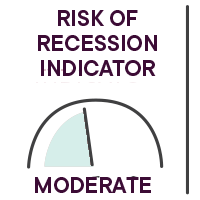During these turbulent times, we are diligently pursuing the mandate you entrusted to us:
sound and effective management of your wealth. Our goal is to free you from financial
concerns at such a humanly difficult and troubling time.
Inflation again, and Ukraine…
What moved the markets in February
Russia’s invasion of Ukraine in the last days of February shook the markets. Still an issue, inflation is on the rise and central banks are reacting to try to curb it.

|
OVERVIEW OF GLOBAL EQUITY MARKETSS |
||||
|
Country |
Index |
Return |
Change |
Year-to-date return |
|
Canada |
S&P/TSX |
+0,28% |
|
-0,13% |
|
United States |
S&P 500 |
-3,26% |
|
-7,64% |
|
|
Nasdaq |
-3,61% |
|
-11,65% |
|
International stock markets |
EAFE |
-2,03% |
|
-6,13% |
|
Emerging markets |
|
-3,25% |
|
-4,43% |
|
China |
MSCI China |
-4,16% |
|
-6,35% |
* All percentages are in Canadian dollars. Source: Morningstar Direc.
Key events
In French only
Ukraine under siege
The Russian invasion of Ukraine has propelled oil prices to their highest level since 2008. Along with the outrage expressed by the United Nations, an array of unprecedented sanctions have been levied against Russia.
Ukraine is a major producer and exporter of many commodities, including wheat. The current instability has caused a significant rise in prices, particularly for energy.
Inflation, policy rates and economic growth
Over the past month, central banks have signaled to the markets that they will raise rates this year, undoubtedly faster than previously anticipated. On March 2, the Bank of Canada raised its key rate by 0.25%.
We believe that inflation will decrease over the next few months, but the situation in Ukraine and its effects on energy and food prices could cause it to persist. Inflation measures that exclude the energy and food components, however, should follow a different path.
Despite statements from central bank heads, it is unlikely that central banks will be able to raise rates as quickly as expected. For households in general, a significant increase in prices at the pump and in food prices has an effect similar to that of a consumption tax. It therefore leads to reduced demand for other goods and services.
However, there are some positives, including the resolution of global supply chain issues and a return in demand for services, which should reduce the demand for goods. This is a consequence of the lifting of lockdowns and a renewed interest in travel and entertainment.
In such an environment, central banks must maintain economic growth as much as possible, while limiting inflation.
Longer-term impact
To reduce their dependence on Russian energy, many countries will be looking for alternative solutions. Some nations like the United States and Canada, and even some European countries that have the capacity, could increase their oil and gas production. In this context, energy security should take precedence over other environmental issues.
Germany is talking about keeping its nuclear reactors longer, as well as building two liquefied natural gas import terminals.
We can also expect the military budgets of nations to increase.
Labour market on the rise
Job creation in the United States was once again stronger than expected, and the labour force participation rate increased further. This is a positive factor for the economy, with more people now in the labour market.
Data for Canada will only be available on March 11.
Results – Canadian bonds
The FTSE Canada Universe Bond Index posted a negative return of 0.61% in February. (Source: Morningstar Direct)
Performance of our funds
View the returns

Our strategic monitoring
Main risks
Here are some risks that we are closely monitoring in the current environment.
- The possibility of an episode of stagflation, i.e. anemic economic growth and high inflation, persists. This situation is negative for the stock markets.
- An overly restrictive monetary policy could cause a major economic slowdown or even a recession.
- The impact of the various sanctions imposed on Russia is still unknown.
Fundamental indicators
Some economic indicators that we continued to follow in February.
Benchmark rates in Canada, Europe and the United States ![]()
The central bank shift to more restrictive monetary policies is negative for the value of financial assets. The Bank of Canada has started its rate hike cycle while the Fed is expected to announce a 0.25% increase in mid-March.
Global Purchasing Managers’ Index ![]()
The index remains above 50, which indicates an economic expansion. China’s number is close to contraction level.
Personal savings ![]()
Savings rates in Canada and the United States are still above historical averages. The level of household debt is stable in both countries.
Inflation rate ![]()
The inflation rate is well above central banks’ targets, which is prompting them to raise their policy rates. The crisis in Ukraine will contribute to rising inflation.
 |
 |
| François Landry, CFA Vice-President and Chief Investment Officer |
Yann Furic, B.B.A., M.Sc., CFA Senior Manager, Asset Allocation and Alternative Strategies |
Sources: Bloomberg
The opinions expressed here and on the next page do not necessarily represent the views of Professionals’ Financial. The information contained herein has been obtained from sources deemed reliable, but we do not guarantee the accuracy of this information, and it may be incomplete. The opinions expressed are based upon our analysis and interpretation of this information and are not to be construed as a recommendation. Please consult your Wealth Management Advisor.




















